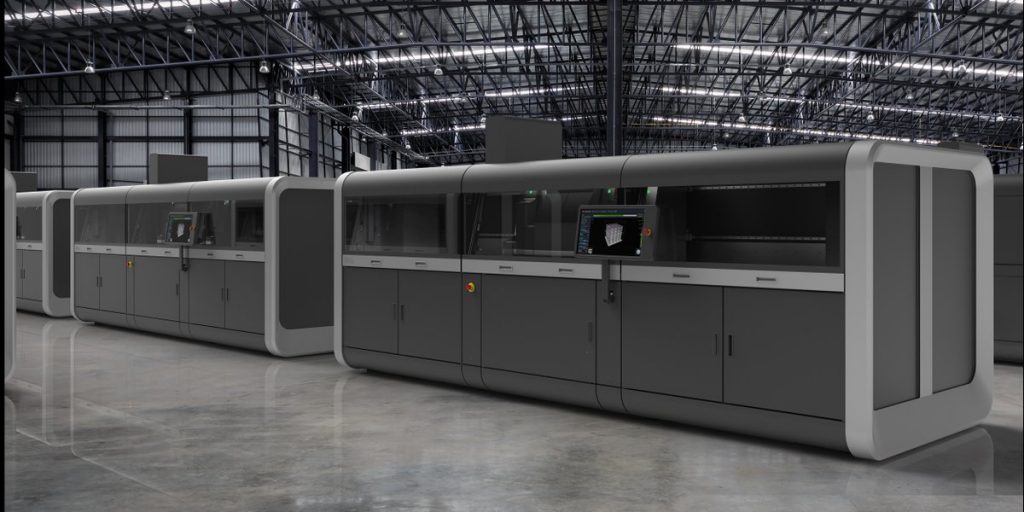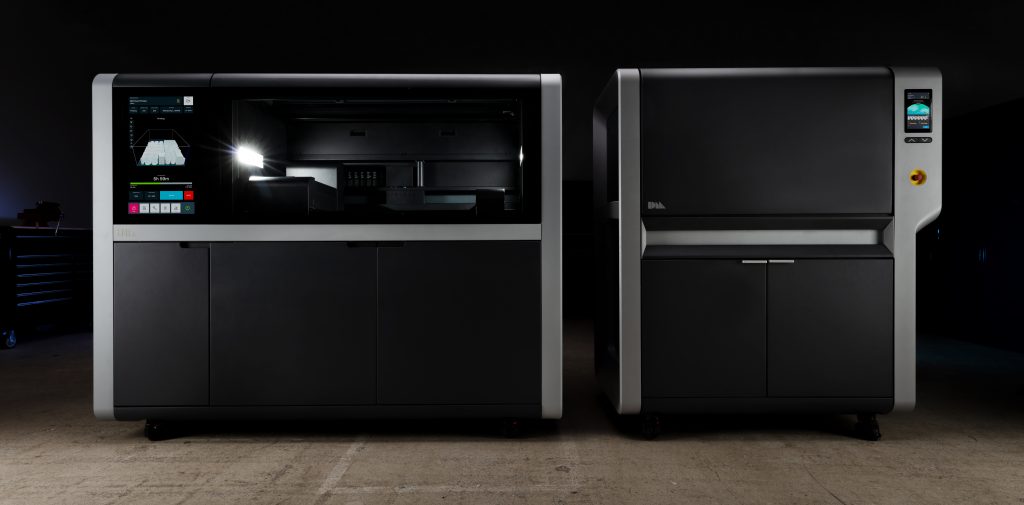Desktop Metal, a leading provider of binder jet 3D printing systems, has announced that it’s received a $7.9 million order from a major car manufacturer based in Germany.
The unnamed company will reportedly use its new binder jet 3D printers for the mass production of metal automotive powertrain parts at high volumes. Desktop Metal already serves several global automotive brands, many of which use the firm’s technology to 3D print series end-use car components. This includes BMW, Renault, Continental, and Ford.
Ric Fulop, Founder and CEO of Desktop Metal, said, “This milestone order is evidence of the performance and economics that make our binder jetting solutions the most advanced in the world and a testament to our teams who have been working tirelessly to help make the vision of mass production via additive manufacturing a reality.”

Binder jet 3D printing with Desktop Metal
Based in Burlington, Massachusetts, Desktop Metal is undoubtedly the major player in the metal binder jet 3D printing space. The company boasts a fast-growing customer base across sectors such as automotive, healthcare, and aerospace, and is now home to over 1,350 employees around the world.
Since going public at the end of last year, Desktop Metal has been quick to acquire several other 3D printing companies in a bid to accelerate its growth. The most significant of these acquisitions was rival binder jet 3D printer manufacturer ExOne, which was bought out for $575M last month. Desktop Metal has also recently bought Belgian recoater system developer Aerosint, hydraulic power system developer Aidro, and more.
“I’m very excited about this combination, which I believe will dramatically accelerate the adoption of production metal additive manufacturing,” explained John Hartner, CEO of ExOne. “This combination brings together two of the industry’s leaders, that combined, will solve customers’ challenges faster and bring the reality of production metal additive forward by years.”
Desktop Metal’s binder jet portfolio comprises the Shop System and Production System 3D printers, each of which has its own extensive set of material capabilities. In fact, just this summer, the company became the first to qualify 4140 low-alloy steel for use with binder jetting. Desktop Metal has even previously launched a sustainable wood 3D printing technology via its subsidiary Forust.
William McDonough, a renowned architect and leader in sustainable development, stated, “The Forust technology allows us to take something that was previously wood waste and re-materialize it into exquisitely beautiful and useful things. We are honoring the cellulose and lignin of the trees by rearticulating them into assets for present and future generations.”

Metal 3D printing: streamlining automotive production
One of the biggest challenges carmakers face is the length of the R&D phase for new models, which can often stretch between three and five years. During this period, a number of prototypes will inevitably be developed, meaning there’s a need for rapid design iterations with short lead times. This is where metal 3D printing comes in.
Rather than preparing manufacturing lines or outsourcing to produce low-volume parts, carmakers are able to use 3D printers like the Production system to bring rapid prototyping in-house. As well as being able to finalize new designs in a much shorter space of time, the use of additive manufacturing lends itself to significant cost savings.
Additionally, automotive manufacturers can also 3D print manufacturing tooling, including jigs and fixtures, to aid with production and assembly. There’s even a potential use case in aftermarket parts, especially those that were once cast but are now obsolete. The dynamic and flexible nature of metal 3D printing enables part providers to print on demand, eliminating their huge component inventories altogether.
Subscribe to the 3D Printing Industry newsletter for the latest news in additive manufacturing. You can also stay connected by following us on Twitter, liking us on Facebook, and tuning into the 3D Printing Industry YouTube Channel.
Looking for a career in additive manufacturing? Visit 3D Printing Jobs for a selection of roles in the industry.
Featured image shows a Production System manufacturing facility. Photo via Desktop Metal.


